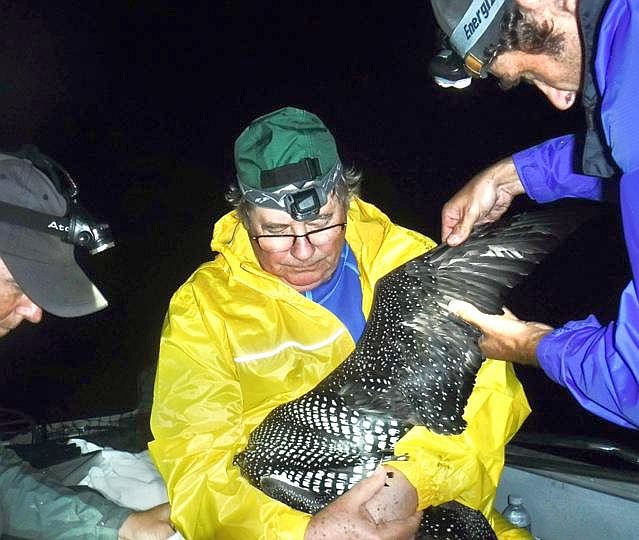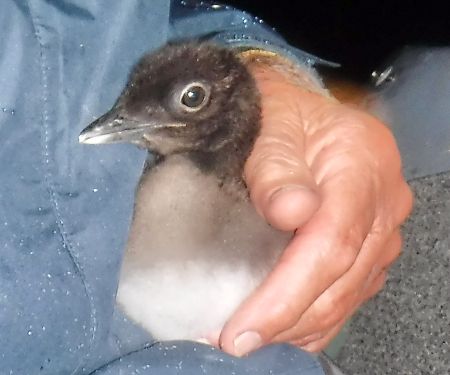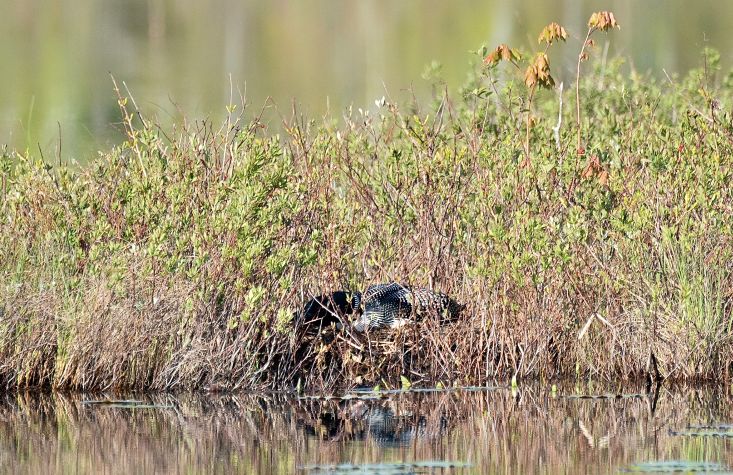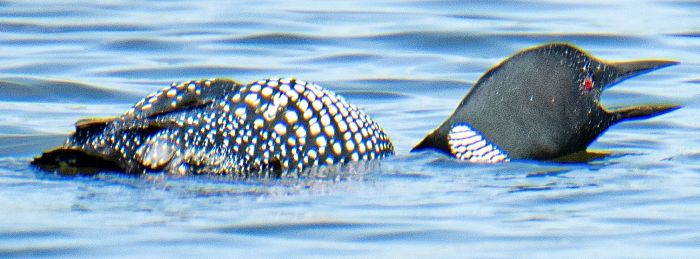
The Process of Banding

As I write this week’s column, we had a loon banding season scheduled for last night with loon expert Lee Attix, two of Biodiversity Research Institute’s renowned biologists, along with our two Colby College interns, only to be thwarted by numerous scatter thunderstorms — again! UGH!!!
A lot of preparation goes into a banding. First and foremost, we need at least six unbanded, adult parents along with their chicks confirmed in the territory earlier that day, light and variable winds, complete darkness with no full moon (or if so, cloud cover), and availability of our Biodiversity Research Institute’s biologists, who hold the required permits for such work, along with our own loon expert Lee Attix. So, there is a lot of logistics that go into a night of banding but the rewards are immeasurable!
Loons are captured for determination of age, sex, and overall health by assessing weight, leg and beak lengths, blood and feather analyses for heavy metals contaminants and banding for easier recognition on future surveys and to track successful nesting pairs. If all goes to plan, our banding team returns in the dark and approaches the territory with a spotlight and a binocular-equipped observer.

Once the adult(s) and chick are spotted and held in sight with the spotlight, they are carefully and very slowly approached while calling the birds in with a chick call. While following the light and call, the adults generally swim right up to the boat.
Once alongside, they are picked up with a large net and secured by other crew whose responsibilities are to secure that head and deadly beak with a towel and tucking under the arm pit of the volunteer holding the loon in his/her lap. Remarkably, these loons have a respiration rate similar to ours and can be quite docile in the arms of the crew but can also in an instant, and without warning, kick out those powerful legs and wings in a raucous escape attempt!

It takes about thirty minutes to obtain two vials of blood, three feather samples, and the numerous measurements. During this period the chick(s) is (are) either secured in a blanket lined box or held by a crewmember, which is a sobering experience enjoyed by all.
And, as if having to cancel and reschedule a night of banding wasn’t enough to deal with, Jodie and Barlow, our two Colby College interns, discovered that the two eggs previously observed being expertly incubated by its parents two days ago were now as of this morning — floating in the water!!!! Yes, floating in the water!!!! That’s a first for me. Which begs the question, why were they floating and not on the bottom as eggs have been found in the past? That will require further study but for the time being, with the adult pair swimming nearby, the interns were advised to relocate the eggs back on the nest, fall back and observe the parent’s behavior. Stay tuned for next week’s edition of the Summertime to see how are two eggs fared.

Another obvious concern is how did these eggs end up in the lake from a relatively level natural hummock nest? A large boat wake in this site was unlikely but not impossible. The 200 ft No Wake Zone is there for a myriad of reasons and we are hopeful that more and more folks wake up to that fact of life. (No pun intended).
In 2022, we lost eight eggs that were either abandoned or flooded out. Last year we lost five eggs. This year we have already lost eight eggs, and we’re not quite done. Please help us in keeping our loon nesting sites secret, quiet, and above all, observe the 200 ft, No Wake Zone.
If you have a particular question regarding our Belgrade loon population, please email your inquiry to info@blamaine.org and we will try to answer your question either in this column or via email.
Dick Greenan is chairman of the Belgrade Lakes Association’s Loon Preservation Project.
Download Full Newspaper: High Res | Low Res (Details…)
<— Previous Article • Summaries • Next Article —>
©2024 by Summertime in the Belgrades. All rights reserved.